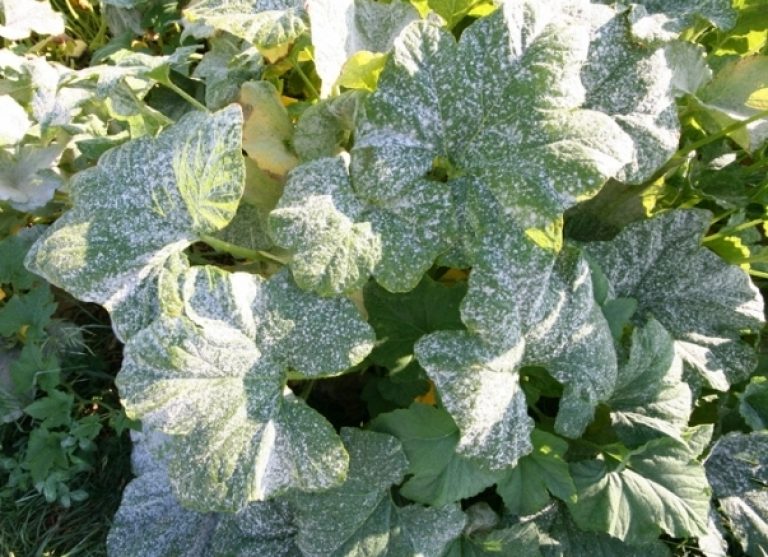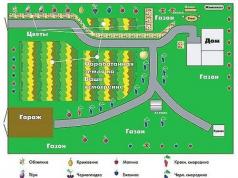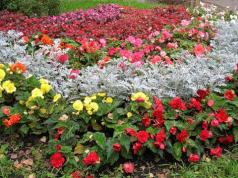Cucumbers, like many other vegetable crops, are exposed to powdery mildew. This does not depend on the variety of cucumbers and growing conditions (open ground, greenhouse). The culprit of the disease is the mycelium on the leaves. Over time, the mushroom grows, forming a white bloom. The leaves dry out, the process of photosynthesis is disrupted. The plant, weakening, dies. Powdery mildew on cucumbers is a disease treated by amateur gardeners and professionals who grow vegetables on an industrial scale. In all cases, it is necessary to get rid of the disease. Consider what to do, how to save, cure cucumbers in the open field or in a greenhouse.
Brief description of the pest
What is powdery mildew? Its causative agent is a mushroom. It appears on plants that are over-fertilized with nitrogen compounds. The factors predisposing to the onset of the disease are high air humidity, as well as temperature - about 20 degrees Celsius. The incubation period is about a week. The most vulnerable to the disease are cucumbers, which grow in rainy and warm temperatures. Often, harmful dew appears on the leaves after heavy rain. Powdery mildew looks like a white spot on the leaves.
The disease can be recognized by the first signs: there is the appearance of white spots with a reddish tint on the top of the leaf plate.
Then spots appear on the bottom plate. The spots gradually merge with each other, forming a single plaque. The leaves dry out, acquiring a loose surface, and die off. The plant is weakening. A greenhouse does not save you from a pest. Due to the presence of drip moisture in this structure, plants often deteriorate there as well. The fungus is located on leaves and cotyledons. Treatment of the plant consists in spraying the leaves with various preparations, including iodine-containing compounds, with the addition of soda in the greenhouse or in the garden.
What to do: preventive measures to control the fungus
In order to prevent the onset of the disease, or to fight it, gardeners carry out a set of preventive measures, including folk remedies:
- Compliance with crop rotation (pathogens should not accumulate in the soil).
- Regular cleaning of plant residues from the beds.
- Carrying out disinfection measures after harvesting.
- Maintaining the temperature in the greenhouse that is optimal for the life of the plant. These are indicators above 20 degrees Celsius.
- Watering vegetables is carried out with warm water.
- Spraying plants with specialized compounds. For example, a composition called Quadris.
Prevention of powdery mildew also consists in the absence of abuse in plant fertilization for the purpose of treatment with preparations of nitrogen, potassium and phosphorus composition in the greenhouse, regardless of the variety.
Effective methods of dealing with the disease
Powdery mildew is a plant disease that destroys crops, regardless of the variety of cucumbers.

The danger of the appearance of a fungus on the leaves of cucumbers is that powdery mildew can destroy up to 70% of the crop. The damage is significant: in order to prevent it, you need to treat the plant, fight the pest. If a couple of cucumbers become infected with the disease, after a while the harvest dies. It is difficult to identify the most resistant varieties to it. Powdery mildew control and plant treatment:
- Creation of a milk whey solution for a variety. Spraying it on cucumber leaves. A film forms on the leaves, which is a protection of the variety and an obstacle to the reproduction of the fungus. Treat with serum effectively.
- Purchase of sodium silicate solution. This solution has a similar effect to serum. It is a protection of the variety.
- Spraying the leaves with kefir. It is not necessary to take fresh kefir: an expired composition will do. The lactic acid bacteria that make up kefir eliminate the disease by killing the fungus on the leaves. This does not harm the cucumber variety. It is a safe treatment without the use of chemicals.
- Spraying the variety with a solution of manure and water. Fill the manure with cold water, leave the solution for 5 days. Next, you need to filter the solution, dilute it 1:10. Spray the leaves with the mixture that turned out.
- The use of nettle infusion as a means of control.
- The use of chemicals. These are drugs: JET, TIOVIT, etc.
Folk remedies, including solutions of soda, iodine, are more efficiently used on varieties after infection.
Iodine is mixed with warm water. The leaves are sprayed with iodine.
In addition, use:
- Colloidal sulfur. A 20% solution should be used in the garden, and 40% in the greenhouse.
- Laundry soap, soda. They are diluted in water in equal proportions. Spray the plant for 7 days.
In addition, iodine sprayers are used. The usefulness of iodine lies in the fact that it is an antiseptic. Iodine destroys the mushroom. The dosage of iodine in the solution should be strictly observed.

The fight against powdery mildew and the protection of plants from it with the help of folk remedies is carried out at different times. It all depends on the means used to fight. For example, the treatment of the plant can be carried out before the flowering period, repeated several times. Pay attention to the waiting times. This is the time when it is forbidden to eat cucumbers. Taking into account the short growing season of the plant, you need to carefully choose measures to combat the fungus.
Downy mildew
- one of the varieties of cucumber leaf disease. It also needs to be fought. The difference from the above disease is the color of the leaves. With downy mildew, it is not white, but yellow. The gardener must necessarily take protective measures and control against this fungus, since in practice it is even more difficult to get rid of it than from the first pathogen.
- First, it is necessary to take preventive measures.
- Secondly, do not sow cucumber seeds close to each other.
- Thirdly, observe the crop rotation.
Moreover:
- do not water the cucumbers with ice water;
- pick cucumbers regularly.
If downy mildew occurs among plants, you must immediately use the drugs. Among them Kuprosat, Oksichrom, Ridomil stand out.
Thus, the factors leading to the appearance of the fungus on the leaves of cucumbers are:
- humid and warm air;
- improper care of cucumbers.
Most disease resistant varieties
No one is immune from the disease. But gardeners distinguish several varieties that show increased resistance to the pests in question. Let's list them:
- ant F 1;
- bee-pollinated variety;
- masha F 1;
- goosebump F 1;
- a boy with a finger F 1;
- benefit;
- Alexeyevich.
These are some of the most popular cucumbers. They can be easily recognized by their appearance. In central Russia, they are common; a person, not being a gardener, can easily distinguish varieties from each other on store shelves and in markets. Gardeners grow the varieties under consideration with great pleasure: in addition to powdery mildew, they are resistant to other diseases: mosaic virus (cucumber), cladosporium.
In part, these cucumbers show resistance to downy mildew.
Gardeners, professional cucumber growers, need to make an effort to control and protect the plant. The main actions of the gardener to combat the disease is spraying. There are many formulations for spraying. Both natural and chemical substances are observed in their components. If you do not protect plants from pests, you can lose your crop.








